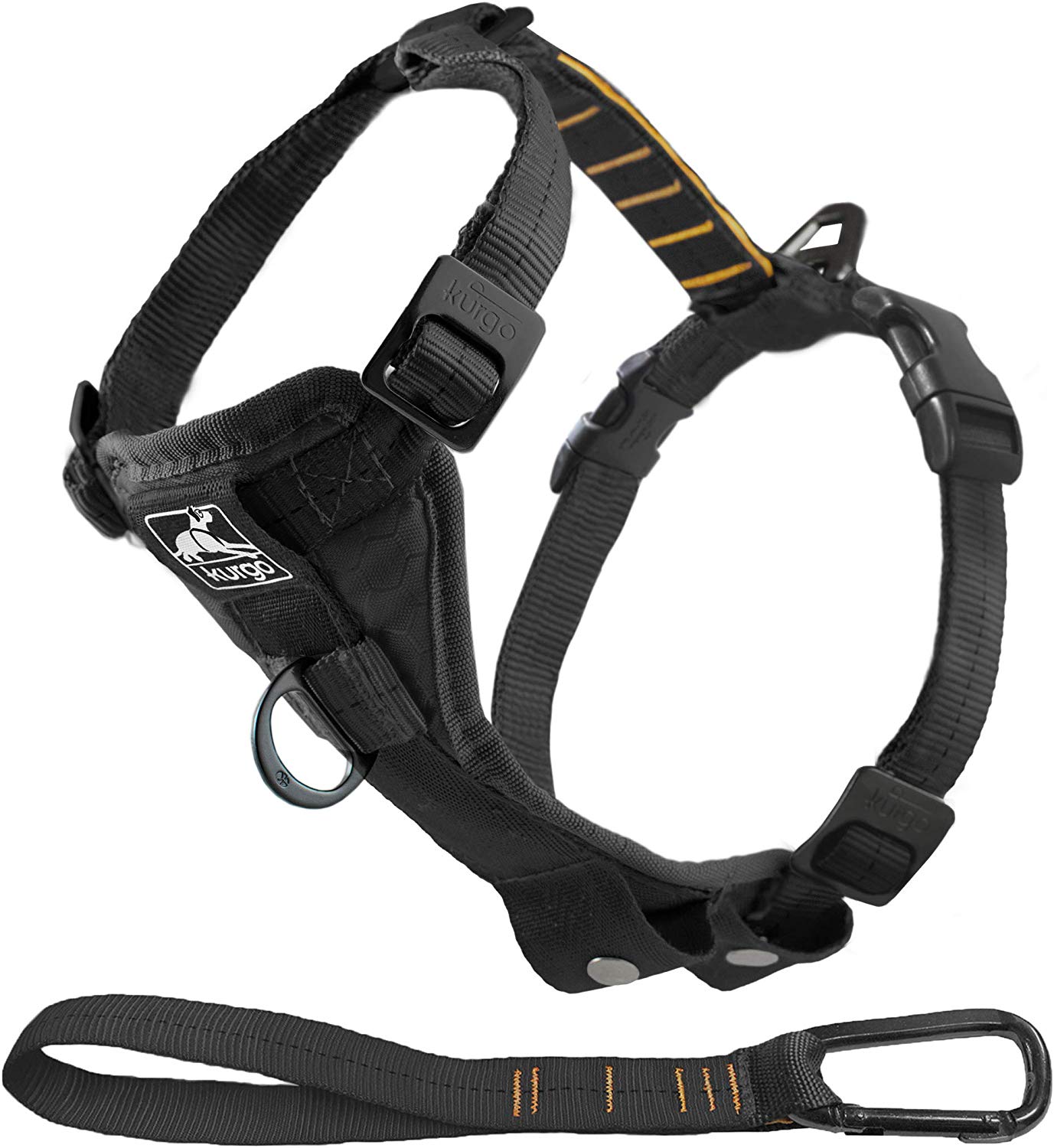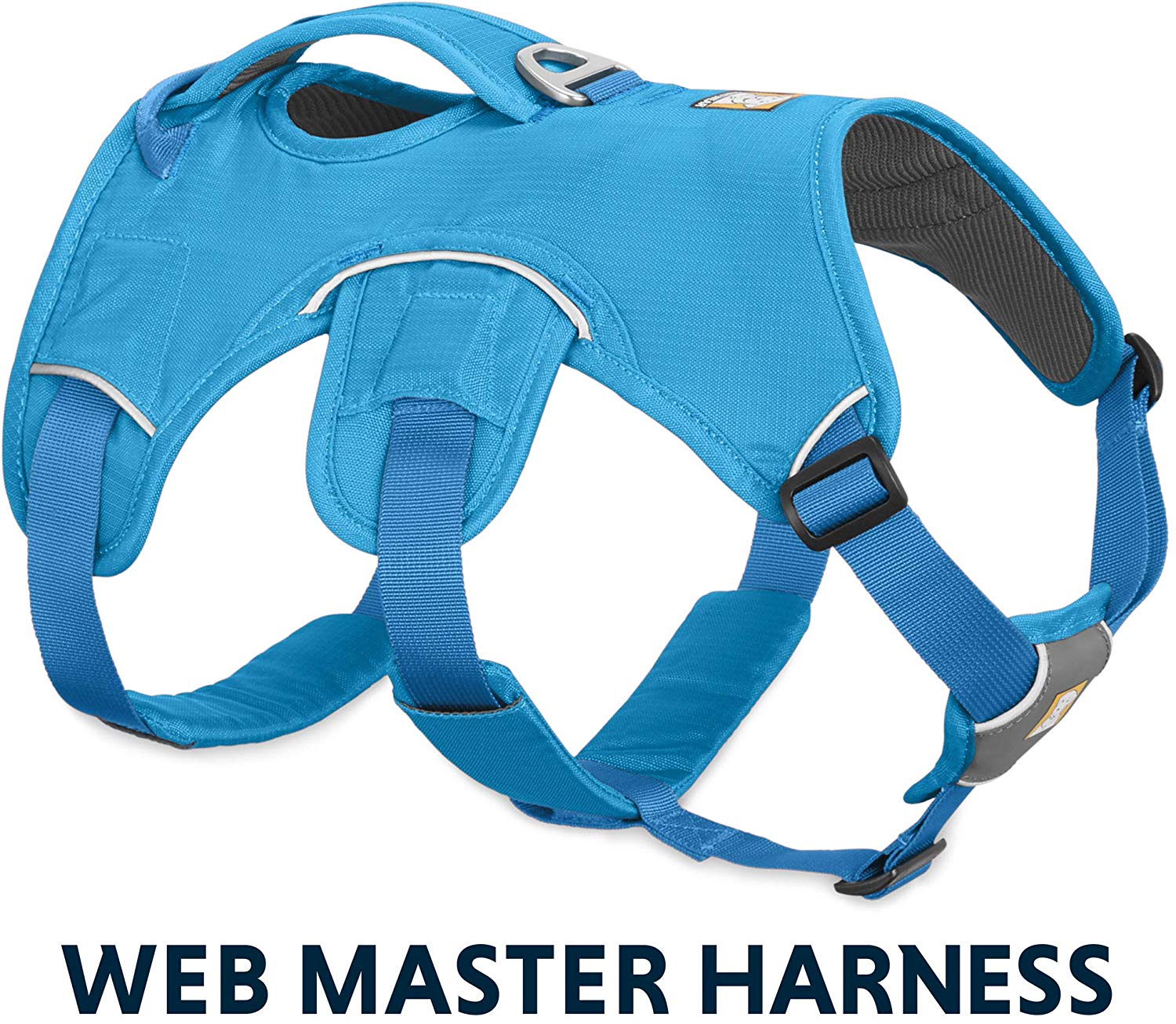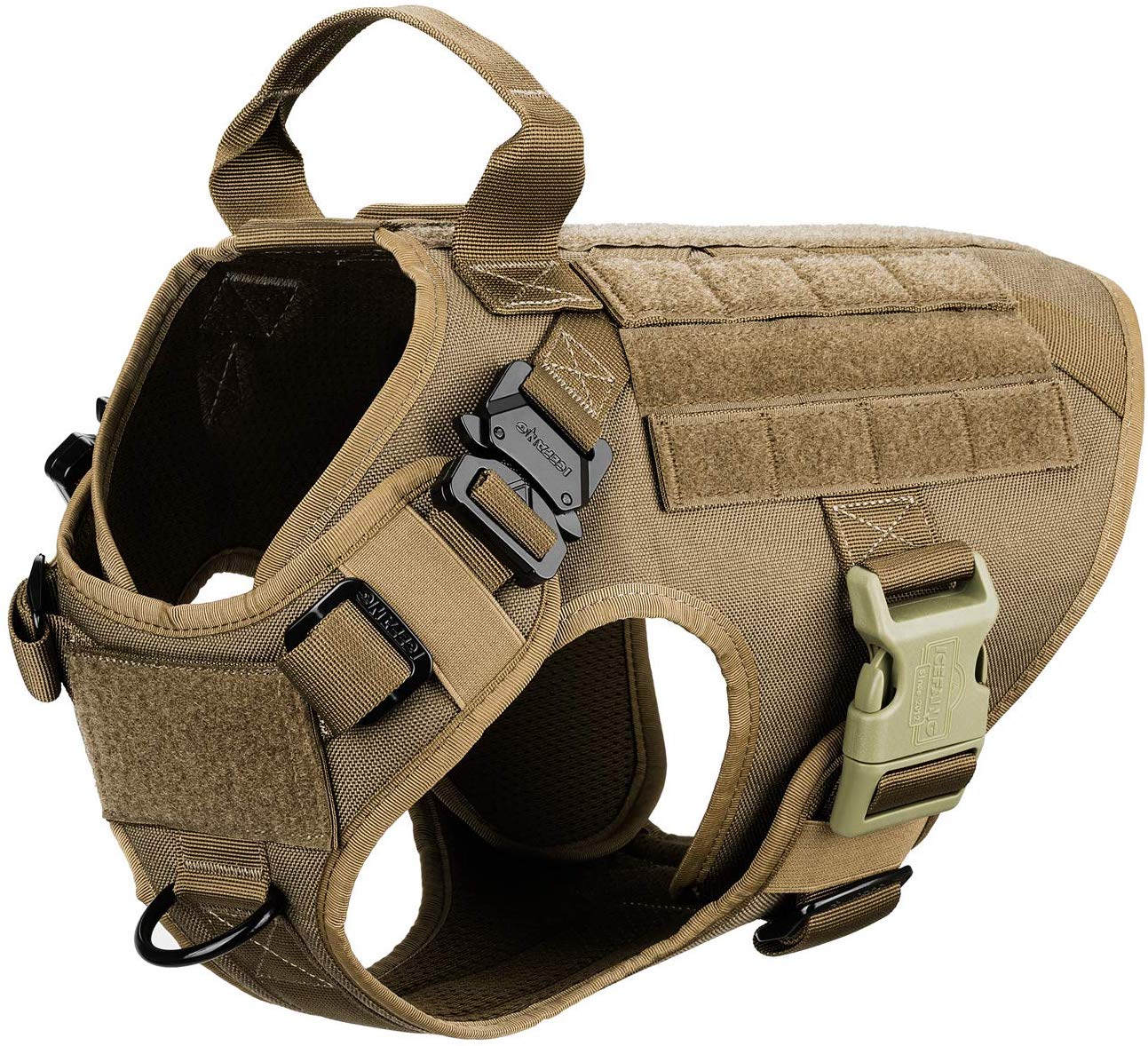Best Dog Harness For Hiking
Most people don't know but dogs make excellent companions on the trail. You don't need anyone else when you can have your dog tagging along while exploring the wild. Of course, you will have to train them to be a valuable companion, but that shouldn't be a huge problem with you owning an intelligent breed.
The important consideration is to keep your dog safe while hiking, and though you'd want them to explore the wild unrestrained, there may be several temptations for your dog to become excited and dash off into danger. Leaving them off the leash is usually not a good idea but you can surely try the next best thing, which is to use the best dog harness for hiking.
Here are some good options for you to consider:
The Best Dog Harness for Hiking: Our Top Picks
1. Kurgo Tru-Fit Dog Harness
If you're looking for one of the best dog harnesses for hiking to keep your old puller safer and protected, you can buy this one. The harness is capable of controlling a notorious puller, mainly because of its front leash attachment. You attach the leash to the D-ring, which makes it easy to compel your dog to be close to you all the time.
Another good thing is that there's a loop on its top. It means you can use it as a regular harness for dogs that don't pull and deserve more freedom of movement. Moreover, the availability of a tether makes it an efficient car harness, as you can connect it with the seatbelt with the utmost ease.
With this adjustable harness, you don't need to worry about causing any discomfort to your pet, as it comes with a padded chest place, which works amazingly well to eliminate pressure from the sternum and trachea.
As it is an over-the-head type of harness, you don't experience any trouble while putting it on or taking it off. It comes with a lifetime warranty, which speaks volumes about its quality.
PROS
CONS
2. Ruffwear Multi-Use Harness
The harness is designed to keep your dog by your side while engaging in adventurous activities. Whether you're going for a short hike or you're going to climb a hill, the harness will perform great to keep your dog safe and protected.
It is quite easy to use the harness to control your dog. It features a sturdy handle to manage things well. You can use the padded handles when you want to lift your dog up in certain situations. It is available in different sizes, so you can easily pick one as per the size of your dog. It means there's a size large enough to suit your golden retriever and small enough to work well for your Chihuahua.
PROS
CONS
3. ICEFANG Tactical Harness
If your goal is to find a perfect hiking harness for a service dog, you've just found the best option. The quality is impressive and there's won't be an issue in terms of durability, thanks to the availability of buckles made from alloy metal. It is strong enough to take a load of up to 250 lbs.
Because of the alloy buckles and heavy-duty straps, you will find this harness to be quite suitable for dogs that can slip out of a harness. It also comes with a 100% no-slip strap, which coupled with tactical belts works great for service dogs.
There's a leash attachment at the front, so you can also turn it into a no-pull dog harness if you want. Overall, it's easy to use and quite sturdy, but be careful when using the front buckles for a large, strong dog.
PROS
CONS
FAQ - A Buyer's Guide
Today, you can find all sorts of dog harnesses for hiking and other outdoor activities. Some come with exceptional design and heavy-duty straps to allow your dog to carry water bottles and other gear with ease. Some come with reflective trim for improved visibility, and of course, some are just perfect for dogs that like to pull. However, you may still have some questions regarding the best harness for hiking, and here's what will help you make a good decision.
Which is Better for Dog Collar or Harness?
Collars seem to be the most obvious solution for walking a dog, and they're available in various styles. Even though they're quite effective, using a harness is sometimes a better choice. The reason is that collars can cause discomfort, especially when your dog is an instinctive puller – that usually is quite common with breeds like huskies.
The same holds true for smaller breeds, such as English Bulldogs because you can so easily hurt their tracheas using an ill-fitting collar, especially if they pull. Over time, it will lead to breathing issues, which you can avoid using no pull harnesses.
If your dog doesn't pull or you know he doesn't have any respiratory problems, a traditional collar may work just fine. But, a harness is more suitable in certain situations, such as hiking. Even though a dogs harness is still not recommended for all-day use, it is a safer option to consider when engaging in outdoor activities.
A right type of harness may also help train puppies and teach them to behave on a leash. Similarly, a harness gives you added control and helps you keep your dog from jumping up on a stranger while walking. You can opt for a front-attaching harness in case your dog likes to pull. But, you can surely put your money on back-attaching harnesses for smaller breeds because they're a lot more sensitive to pressure.
So, as a whole, you can choose between collars and harnesses considering your unique situations and the breed you own. Nevertheless, if you don't want to hurt your dog and want him to be with you while hiking and exploring the wild, a harness will prove to be the best option.
What is the Easiest Dog Harness to Put On?
You can find a variety of harnesses today and so many of them are quite simple to put on and take off. For instance, there are harnesses that you just need to slip over your dog's head and then connect the buckle, usually located under their belly. With these dog harnesses, you don't need to deal with several buckles or squirmy legs.
Some dog harnesses now come with Velcro patches, making it even easier to put them on even when your dog is going to use them for the very first time. A good thing about a harness with multiple Velcro patches is that it is harder for your dog to slide out of it.
What is the Best Harness for a Dog that Pulls?
The most important thing you can do to calm your dog that pulls is to redirect his attention. You can do it using the best no-pull harness, which has a leash attachment right in front. When you apply some force, it turns your dog sideways and diverts his attention quickly.
To choose the best harness for a dog that pulls, ensure that the one you buy doesn't have its straps resting on or near the neck of your dog. This way, you won't have your dog coughing in case you apply any force to counteract pulling. You may benefit from choosing a harness with a buckle under the belly and over the back to ensure that it doesn't hurt your dog when you try to discourage pulling.
These days, you can also find cool leashes that function quite like dogs harnesses. You need to attach it to the existing dog collar and then wrap the leash around and under your dog's chest. Now, you need to bring it up and connect with a little hook. The leash gets a bit tight when your dog pulls, but it won't hurt your dog because it grabs him from the chest and not from the neck.
Another great feature to have in the best dog harness for a serious puller is adequate padding. That's important especially if your excited dog is quite capable of slipping out of the harness. The padding around the chest and neck area will ensure a snug fit and make it "escape-proof" to a considerable extent.
It means that a good no-pull harness for dog will have its buckles at the right places, come with plenty of padding, and apply pressure on your dog's chest instead of his neck. But, keep in mind that a harness alone won't eliminate pulling behavior, and sometimes, you need to consult a behaviorist or trainer for best practices.
What Do You Feed a Dog When Hiking?
Once you've found the best dog harness for hiking, you'll feel a lot more comfortable while exploring difficult trails. However, bringing your dog with you is one thing but keeping him happy and comfortable through the adventure is an entirely different ball game. That's when you have to worry about feeding him in the right way.
Which dog treats to bring with you on the trail will depend directly on the length of your hike. You will need something different on a quick three-mile walk as compared to what your dog needs on a longer hikes. Nevertheless, you have many options to consider, but choose what's easy to pack in a small container, won't result in a mess in your bag, and support the effort your dog needs to put in during the hike.
Here are some interesting ideas to consider:
- Kibble: Kibble will always be an interesting choice, especially if you mix at least 20% puppy food into it.
- Dog Food Rolls: If your dog love wet food, dog food roll are perfect for hiking because most of these products are designed to be a complete meal and provide impressive levels of meat-based protein.
- Training Treats: You can always opt for small, pea-sized treats to feed your dog while hiking. They're easily digestible and work amazingly well for shorter hiking trips.
Other than these options, you may also go for dog cookies or biscuits, as well as dog bars, which may work as a perfect meal replacement. Similarly, some people believe that jerky treats are best for dogs while hiking because these dehydrated treats provide your dog with enough protein and energy to keep up with you on the trail.
Conclusion
Taking your dog while hiking can be great fun but you need to keep him safe when wandering on dicey terrain. Investing in a good dog harness is the answer but be sure to pick the best one to ensure your four-legged friend enjoys the freedom of movement while staying safe all the time. Finding the best dog hiking harness doesn't have to be a tricky task, as all you have to do is consider your dog's temperament, size, and breed to select the best harness.
Just be sure to check some additional harness features when you have an old puller, as you want to protect his neck without putting too much pressure on his chest and belly. So, be mindful of what to consider and get the best dog hiking harness for your beloved pet.



